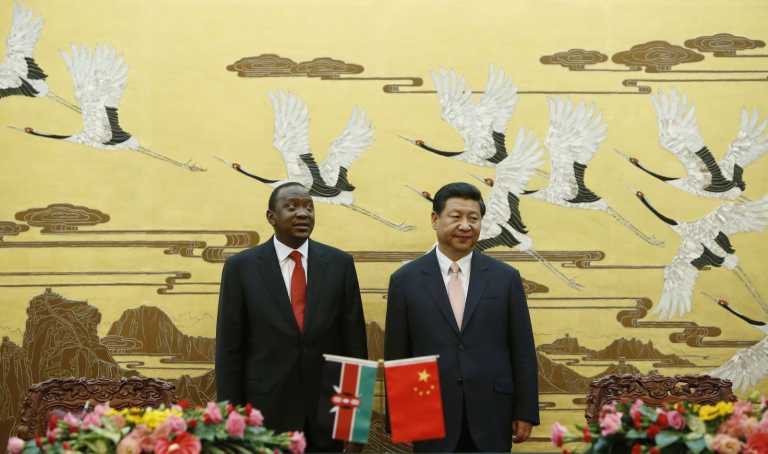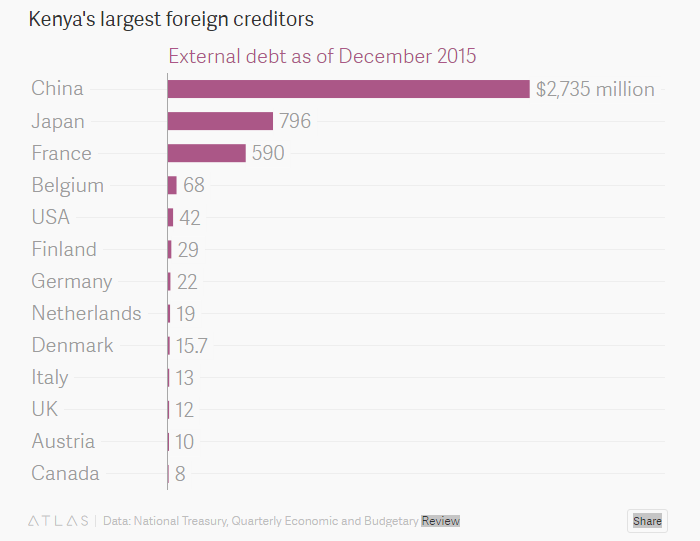
Kenya secured a $600 million loan from China last week to help towards paying for a $6 billion budget deficit that the government expects this year. The loan, one of many China has given to the country over the years, helps Kenya’s goal of bringing down its budget deficit to 7.9% of gross domestic product instead of the previously forecast 8.7%.
Kenya’s Growing Debt
But it also raises the prospect of whether East Africa’s largest economy is growing too indebted to China. China is now Kenya’s largest creditor, accounting for 57% the country’s total external debt (pdf, p.37) of $4.51 billion, according to the World Bank. That figure has grown quickly. Chinese loans to Kenya grew an annual rate of 54% between 2010 and 2014 while loans from other lenders like Japan and France fell.

“Kenya still has a heavy debt burden and China’s loans can bring debt to unsustainable levels. Some of China’s loans are non-concessional, which can raise debt to GDP levels quickly,” a World Bank report on China’s impact in Kenya in May concluded.

Critics point out that Chinese loans, usually for infrastructure projects, are often contingent on a Chinese company being contracted to complete those projects. Others say that the terms are unfavorable to Kenya and that funding from the African Development Bank or the World Bank would be cheaper. “If we leave these big projects to the corrupt elite and crafty Chinese contractors, they will bankrupt us,” wrote a columnist in the Kenyan paper, the Daily Nation, in March.
Chinese Loans to Africa
Chinese loans to the African continent are often exaggerated. They amount to about $6.2 billon a year, a little less than the amount the United States has been spending on its HIV prevention campaign PEPFAR since 2009.
According to Apurva Sanghi, a lead economist for the World Bank and one of the co-authors of the report, it doesn’t matter where these loans come from but whether the debt Kenya is accumulating is sustainable. (For instance, China has been America’s largest creditor for years now.)
Although Kenya’s debt burden compared to its gross domestic product has been over 50% since 2013, the International Monetary Fund declared Kenya’s at low risk of “debt distress” in an assessment last year.




